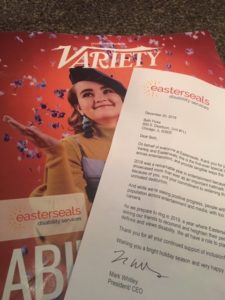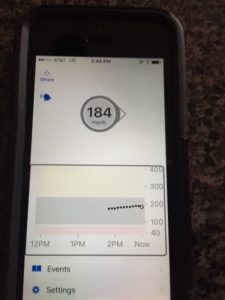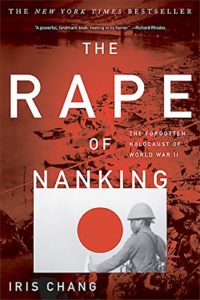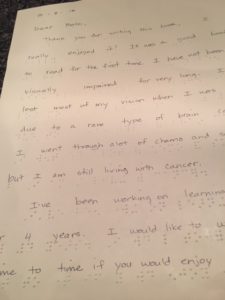Ready for my Close-Up
January 3, 2019 • 28 Comments • Posted in blindness, careers/jobs for people who are blind, writingA few months ago Variety Magazine presented the first-ever in-depth look at people with disabilities in the entertainment industry. They started looking for writers to work on the special report this past summer, and it was important to the editors that one of the freelancers they hired for the project have a disability. Thanks in large part to my part-time job moderating the Easterseals National Blog, Variety chose…me!

Editors assigned me three people to profile: Fred Maahs Jr., senior director of strategic partnerships for Comcast; Tiffany Smith-Anoa’I, executive VP of entertainment diversity, inclusion & communications at CBS Entertainment; and Peter Farrelly, a filmmaker (and one of the “Farrelly Brothers”) famous for movies he’s made with his brother Bobby.
I enjoy interviewing people and writing profiles, but it’s been years since I’ve done that for a periodical, much less a magazine like Variety. Each phone interview was a conference call with others listening in – kind of unsettling — but I managed to get some decent quotes to use in the stories. Examples:
- Fred Maahs, Jr. has been using a wheelchair since a diving accident when he was 18 years old. “No matter your race, gender, orientation, ability, income, really, whatever your zip code is, everyone should have access to the Internet and to opportunity,” he says. “It’s the right thing to do.”
- Tiffany Smith-Anoa’I acknowledged that progress for actors and creatives with disabilities lags far behind other minority performers. “This isn’t a situation where people have a tremendous amount of malice, I think it’s much more a tremendous amount of ignorance.”
- Peter Farrelly told me he thinks making room for actors with disabilities makes movies better. “When I get people in the door who are actors with disabilities, I’m getting a face that nobody’s seen before, and that’s the advantage for me. There’s nothing worse for me than to see a movie where you recognize half the people from other movies. Then you’re reminded you’re watching a movie. I like new faces, and there are thousands of new faces out there, disabled actors who aren’t getting their chance. That just helps make the movie better.”
It took a month or more to get all the interviews done, the stories written, revised and rewritten, and during all that time I reveled in telling family and friends I was “working on a story for Variety.” Abilities Unlimited has been available online since November, and a four-color print version arrived by mail this past week. And guess what? They’re reprinting it for distribution at the 2019 Sundance Film Festival. Hot dog! Now I can tell friends and family that a piece I worked on “will be appearing later this month at Sundance.”




